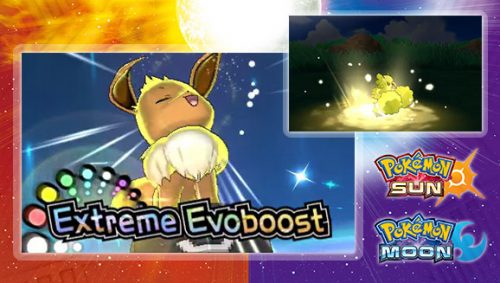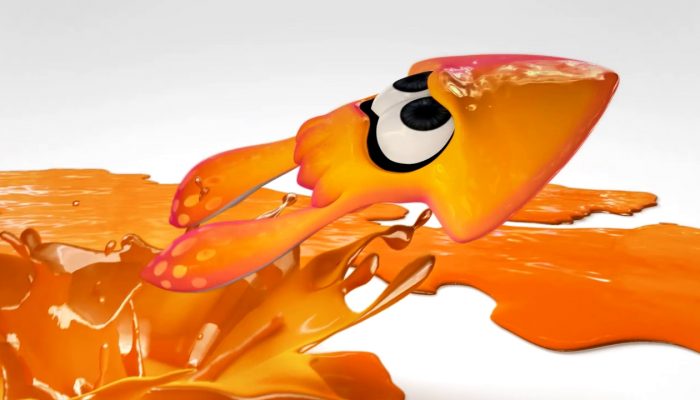 Sun & Moon strategies around Eevee, Oricorio and Palossand.
Sun & Moon strategies around Eevee, Oricorio and Palossand.
☆ NintendObs Weekly – Monday, June 19, 2017 – Sunday, June 25, 2017.

Unexpected Pokémon—Unbelievable Power!
Helping unexpected Pokémon shine in battle can be both rewarding and fun. It’s more challenging to build teams around Pokémon that may not have the highest stats, but you can create powerful strategies by drawing out each Pokémon’s unique strengths.
We’ll look at a trio of strategies featuring some unheralded Pokémon that players used to great success during the 2017 Video Game Championships season. Few Trainers expected Eevee, Oricorio, or Palossand to be top performers, but they’ve all helped Trainers edge closer to the Pokémon World Championships.
Each of these strategies will feature moves or Abilities that might seem a little silly if you normally engage in Single Battles. But many Pokémon that might not be your first choices for Single Battles can be key to unique strategies in Double Battles. Look closely at both the star Pokémon on these teams and at their supporting casts—perhaps you can repurpose some of these choices to create your own strategies.
Evolution Isn’t Always the Solution
Eevee is beloved by many Trainers, but in the past most selected one of its Evolutions to take on their toughest foes. Now little Eevee can anchor one of the most powerful teams in the Championships Battle format itself by using its unique Extreme Evoboost Z-Move, which increases each of its stats by two levels. Check out this sample team built around the Evolution Pokémon.
The strategy behind this team is simple to understand, but tricky to execute. First, the team needs to defend Eevee while the Pokémon uses Extreme Evoboost to increase each of its stats by two levels. Then the team must continue defending Eevee while it uses Baton Pass to relay its stat boosts to one of its teammates—usually Krookodile or Espeon. Finally, copy the boosts using Psych Up to fill your side of the field with superpowered Pokémon.
Eevee won’t be able to power up and use Baton Pass without some support, so you’ll want to pair it with Pokémon like Clefairy or Smeargle to keep it safe. Clefairy might not look sturdier than Eevee, but it can endure strong attacks thanks to the Eviolite held item. The support Clefairy can provide is impressive—it can redirect attacks away from Eevee using Follow Me, restore Eevee’s HP with Heal Pulse, and its Friend Guard Ability will reduce the damage of any attacks that find their way to Eevee. Smeargle can Sketch whichever supportive moves you want to draw on, but Fake Out, Follow Me, Spore, and Wide Guard deserve extra consideration.
Some savvy Trainers have started deploying Whimsicott alongside Eevee in place of Smeargle or Clefairy because it provides more help against the team’s biggest weaknesses. Whimsicott’s Taunt has increased priority, so it’s great at preventing opponents from using Haze, Roar, Whirlwind, or their own Taunt to stop Eevee from using Baton Pass. And if you give Whimsicott a Razor Fang to hold, it can cause an opponent to flinch by using Fling, potentially stopping a key attack entirely. Make sure you have a game plan for Haze and Roar if you don’t include Whimsicott—you can’t afford to waste your Extreme Evoboost.
Most Trainers select Krookodile and Espeon to be the final recipients of Extreme Evoboost. Krookodile helps the team out defensively with the Intimidate Ability, and it can learn a key attack, too. Power Trip does increased damage for each stat boost Krookodile has, so it pairs perfectly with all the stat boosts from Extreme Evoboost. Espeon’s Stored Power attack uses the same mechanic, and its Magic Bounce Ability protects it from the troublesome effects of Taunt, Roar, and Toxic.
We’ve seen plenty of other Pokémon used successfully on teams featuring Eevee this year, so don’t be afraid to put your own spin on this strategy. If you’re not sure where to start, Tapu Fini’s Misty Surge Ability can be helpful to avoid status conditions, while Pokémon that can learn Fake Out—like Incineroar, Salazzle, and Persian—are able to provide support throughout battles.
Tiny Dancer
Oricorio is one of the more intriguing species of Pokémon discovered in the Alola region. It has four different forms, each sharing an Ability that no other Pokémon can have: Dancer. When an opponent uses a dance move while Oricorio is on the field, it immediately responds with the same dance move, even if it attacked earlier in the turn. Dancer can be tough to use in Single Battles, but you can form a powerful dance party like this one for Double Battles.
Befitting its classification as the Dancing Pokémon, Oricorio can learn all the right moves. You’ll normally want to start by teaching it two crucial Flying-type moves that don’t have anything to do with dancing: Tailwind and Hurricane. Tailwind increases the Speed of each of your Pokémon, which is particularly important for this team. Most Pokémon with dancing moves happen to have iffy defensive stats, so it’s vital to knock out opponents before they can attack. There aren’t many great special Flying-type attacks, but combining Hurricane with Flyinium Z gives Oricorio the accuracy and power to waltz all over its opponents.
Revelation Dance’s type changes to match Oricorio’s current form, making for an incredibly flexible Pokémon. If you’re battling with Championships Battle rules, we’d suggest you select the Electric-type Pom-Pom Style. It’s tempting to dance the flamenco in a format with few strong Fire-type Pokémon, but you’ll find it’s tough for Oricorio to accomplish much if it has a weakness to Tapu Koko’s Electric-type attacks.
It wouldn’t be much of a team if Oricorio was dancing by itself, so you’ll want to have Pheromosa and Lilligant also bust a move. Both can power up using Quiver Dance, which raises the user’s Special Attack, Special Defense, and Speed—a dance Oricorio will then repeat if it’s on the field. If you’re looking for an encore performance, Lilligant can use the Grass-type attack Petal Dance. Since it’s also a dance move, Oricorio can use two different attacks in the same turn if you command it to attack while Lilligant uses Petal Dance. Oricorio’s stats may not catch your eye, but after the dancing starts, the damage it deals will.
Torkoal doesn’t dance, but it pairs so well with Lilligant that it’s tough to exclude it from the team. Lilligant’s Chlorophyll Ability doubles its Speed while the skies are clear because of Torkoal’s Drought Ability, and Torkoal’s low Speed helps avoid disaster if an opponent uses Trick Room. Many Trainers will play defensively when they see Lilligant and Torkoal together on the field, so don’t be afraid to switch Torkoal for Oricorio while Lilligant uses Quiver Dance if you think you can get away with it.
The final two Pokémon slots are wildcards, but Tapu Lele is selected frequently enough to deserve a special mention. The Psychic Terrain created by its Psychic Surge Ability protects the frail dancers from moves with increased priority, and removing Electric or Misty Terrain ensures Lilligant’s Sleep Powder won’t be negated. Most Trainers finish the team with Muk or Garchomp, but lots of Pokémon could potentially help out, so get creative.
Chasing Waterfalls
The Alola region seems to be full of Pokémon with quirky Abilities, and Palossand is no exception. The Water Compaction Ability raises its Defense by one level every time it’s hit by a Water-type attack, but such attacks are a dangerous prospect for a Ground-type Pokémon. Water Compaction doesn’t seem like the sort of Ability you’d want to build your team around, but you can Shore Up its weaknesses with a little work.
The team above, popularized by World Championships semifinalist Markus Stadter, seeks to boost Palossand’s stats as much as possible. Water Compaction activates each time Palossand is hit by a Water-type attack, so the quickest way to boost its Defense is through multi-hit moves like Water Shuriken and Razor Shell. But you can’t count on your opponents to use these moves for you—if you want to guarantee Palossand powers up, you’ll have to attack it yourself!
Smeargle is the perfect Pokémon to start firing away at Palossand—its stats aren’t very high, it’s not a Water-type Pokémon, and it can learn Water Shuriken through Sketch. Water Shuriken has increased priority and can hit up to five times, so you’ll almost always be able to get a few boosts from Water Compaction. To maximize Palossand’s power, have it hold the Weakness Policy item. Not only will Water Shuriken increase Palossand’s Defense, but the first hit will boost its Attack and Special Attack, too.
With Water Compaction strengthening Palossand’s Defense, your opponents will probably try to attack its Special Defense instead. But this strategy has a solution for that, too—Palossand can increase its own Special Defense using Amnesia. With all these boosts, Palossand will be extremely difficult to take down. It can even regenerate lost health using Shore Up, so it’s a tough castle to siege once it’s been fortified.
Palossand and Smeargle can be incorporated into many other strategies, but the team above includes some notable tricks. Tapu Koko can copy Palossand’s stat boosts using Psych Up, then restore its own HP with Roost. You could deploy many different Pokémon in this role, but you’ll probably want to keep the combination of Psych Up and an HP-restoring move.
To make the most of Smeargle’s Endeavor and Palossand’s low Speed, we’d also suggest including a Pokémon that knows Trick Room on the team. Porygon-Z isn’t the sturdiest Pokémon capable of using Trick Room, but it makes up for its lost defensive strength with an absurdly powerful Breakneck Blitz. Decide for yourself if you’d like to go this aggressive route, or if you’d prefer a more conservative strategy featuring a Pokémon like Porygon2 instead.
We hope you’ve enjoyed reading about these surprising teams. Try searching for Double Battle QR Rental Teams featuring Eevee, Oricorio, and Palossand to get started with these sneaky strategies yourself. Then, try to put your own spin on each of them—perhaps these teams could become even more powerful with a few clever tweaks! And remember to check back at Pokemon.com/Strategy for more Pokémon TCG and video game strategy, tips, and tournament analysis.
Source: Pokémon.
At NintendObserver, the comments are on Discord.
Click on Community to learn more. 🙂
…
And if you’ve already got yours, click on Pokémon Sun & Moon for everything you need to know about the games. 😀



